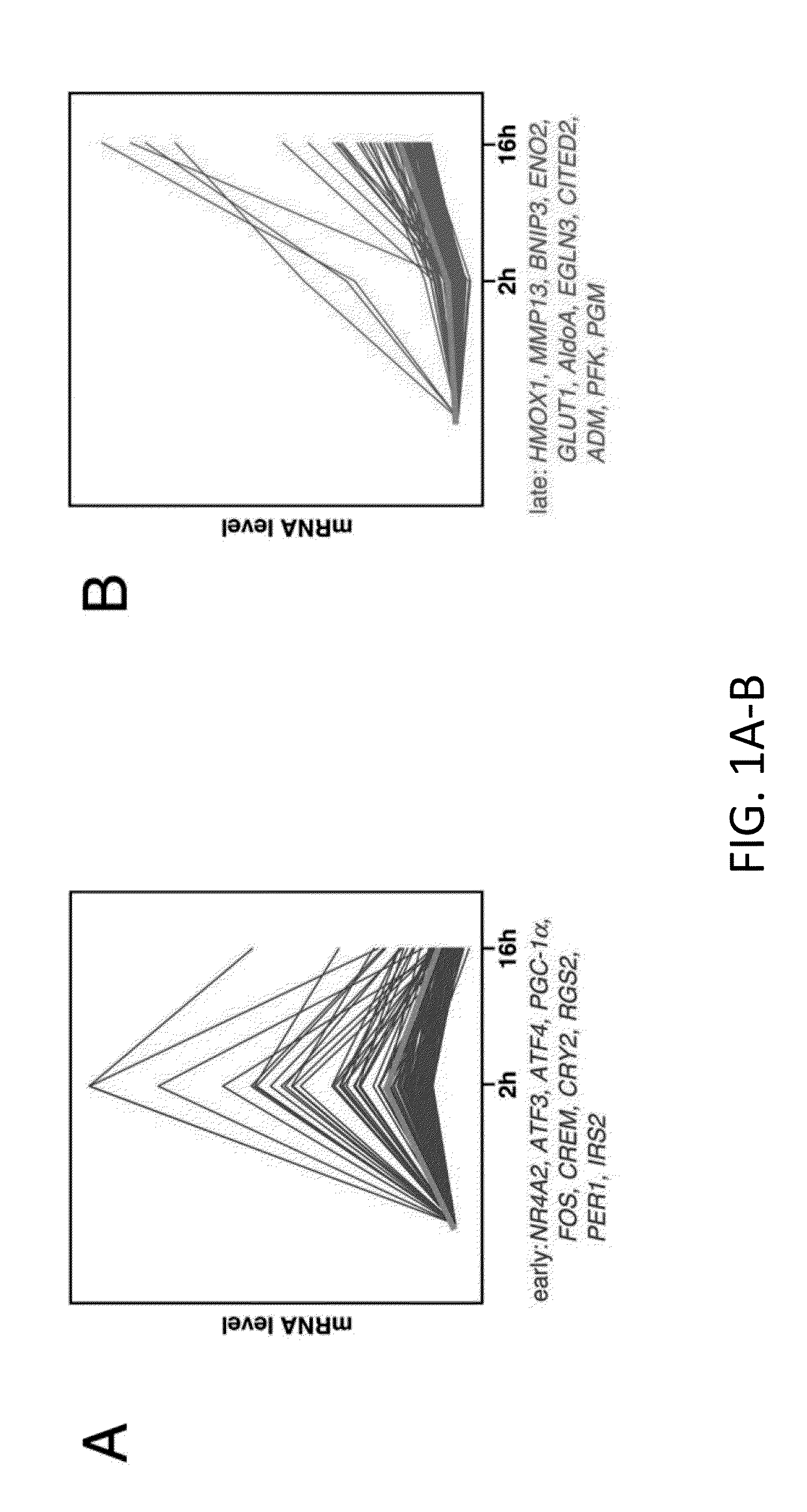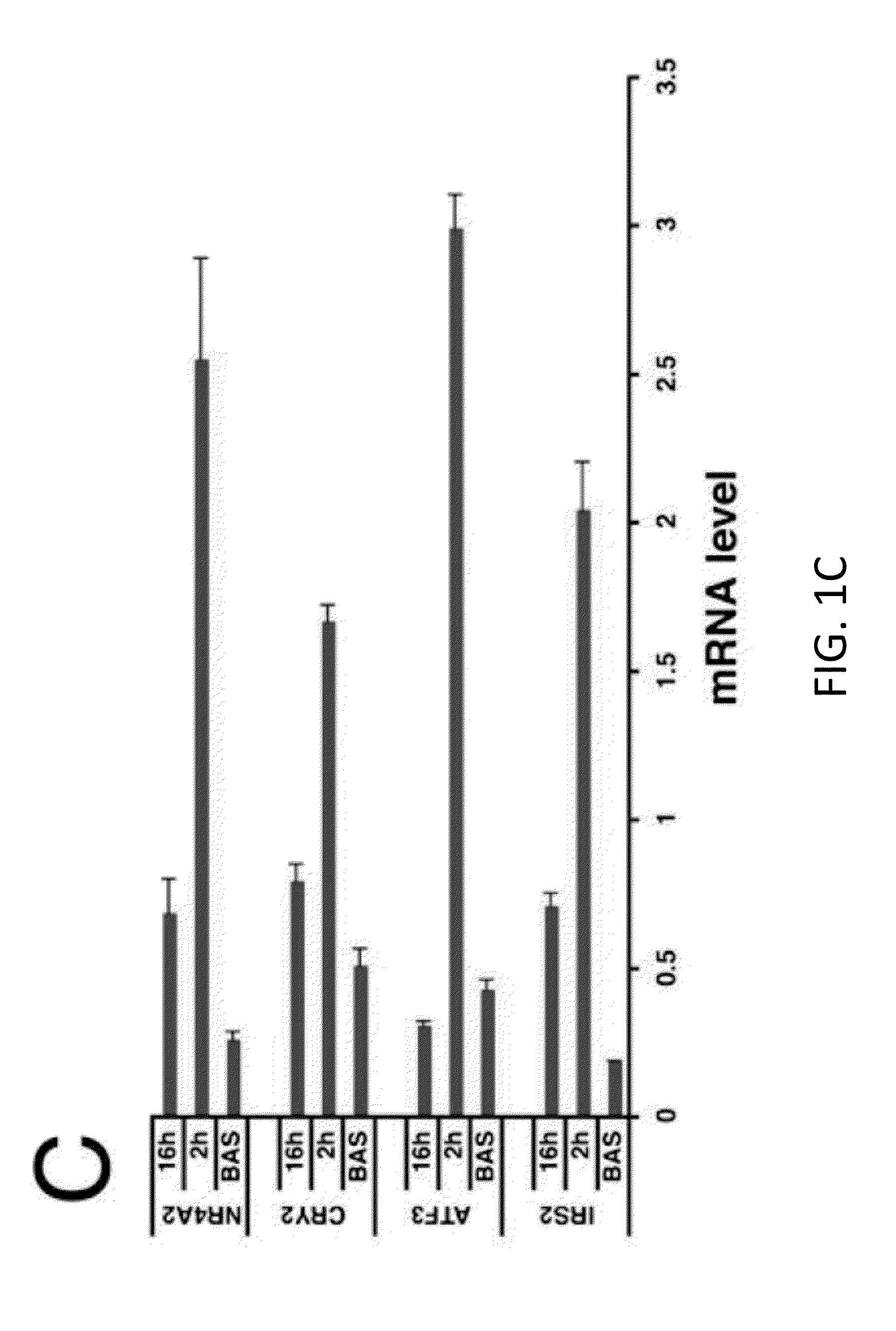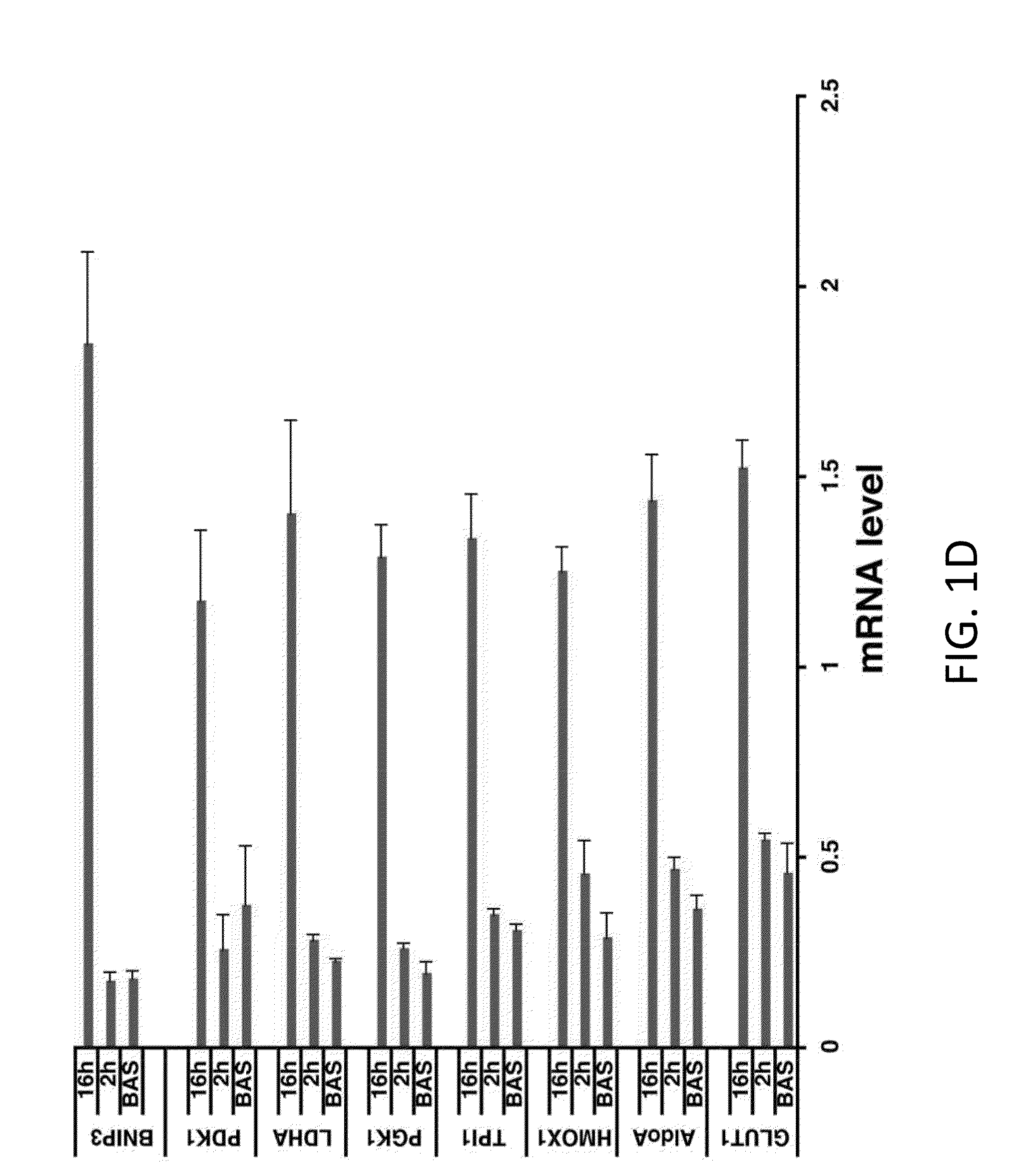Combination therapies to treat diabetes
a technology of diabetes and glp1 agonist, which is applied in the field of molecular biology and medicine, can solve the problems that glp-1 agonists are not effective in all patients with type ii diabetes, and achieve the effects of promoting hif-1 activity or survival of beta cells, promoting beta islet cell proliferation, and promoting beta cell survival
- Summary
- Abstract
- Description
- Claims
- Application Information
AI Technical Summary
Benefits of technology
Problems solved by technology
Method used
Image
Examples
example 1
Materials and Methods
[0081]Immunoblot and immunoprecipitation: Immunoblots were performed as described (Dentin et al., 2008). For immunoprecipitations, cell lysates were incubated with primary antibody and 25 μl of a 50% slurry of protein G agarose beads for 4 hours with rotation at 4° C. Immunoprecipitates were washed with lysis buffer and denatured by boiling in 20 μl SDS sample buffer.
[0082]Immunofluorescence:
[0083]Whole pancreases were fixed in 4% paraformaldehyde, fresh-frozen, and cryosectioned. Sections were incubated with primary antibody overnight and with fluorophore conjugated secondary antibody for 1 hour. Sections were mounted with Vectashield mounting medium containing DAPI (Vector Labs) and analyzed in a Zeiss LSM 710 Laser Scanning Confocal Microscope. TUNEL staining on paraffin embedded pancreatic sections was performed with the ApoBrdU DNA Fragmentation Assay Kit (BioVision; K401-60).
[0084]Chromatin Immunoprecipitation:
[0085]INS-1 cells were plated on 15 cm dishes ...
example 2
mTOR Links Incretin Signaling to HIF Induction in Pancreatic Beta Cells cAMP Stimulates CREB and HIF Pathways in β Cells
[0111]Gene profiling studies were performed to evaluate effects of the GLP-1-cAMP pathway in INS-1 insulinoma cells. Short-term (2 hour) exposure to the cAMP agonist Forskolin (FSK) up-regulated a number of CREB target genes that contain a conserved cAMP response element (CRE) and that are CREB-occupied in vivo (IRS2, RGS2, PGC1, NR4A2) (Zhang et al., 2005); these were down-regulated after prolonged (16 hour) treatment with FSK (FIG. 1A, FIG. 5).
[0112]A second set of genes were detected that were expressed at low levels at 2 hours, but increased after 16 hours exposure to FSK, when CREB target genes are down-regulated (FIG. 1B, FIG. 5). Many of these late response genes correspond to hypoxia-inducible genes by GO analysis; they code for proteins that promote glucose uptake and glycolysis (GLUT1, AldoA, TPI, PGK1) as well as oxidative stress defense (HMOX1). Similar...
PUM
 Login to View More
Login to View More Abstract
Description
Claims
Application Information
 Login to View More
Login to View More - R&D
- Intellectual Property
- Life Sciences
- Materials
- Tech Scout
- Unparalleled Data Quality
- Higher Quality Content
- 60% Fewer Hallucinations
Browse by: Latest US Patents, China's latest patents, Technical Efficacy Thesaurus, Application Domain, Technology Topic, Popular Technical Reports.
© 2025 PatSnap. All rights reserved.Legal|Privacy policy|Modern Slavery Act Transparency Statement|Sitemap|About US| Contact US: help@patsnap.com



